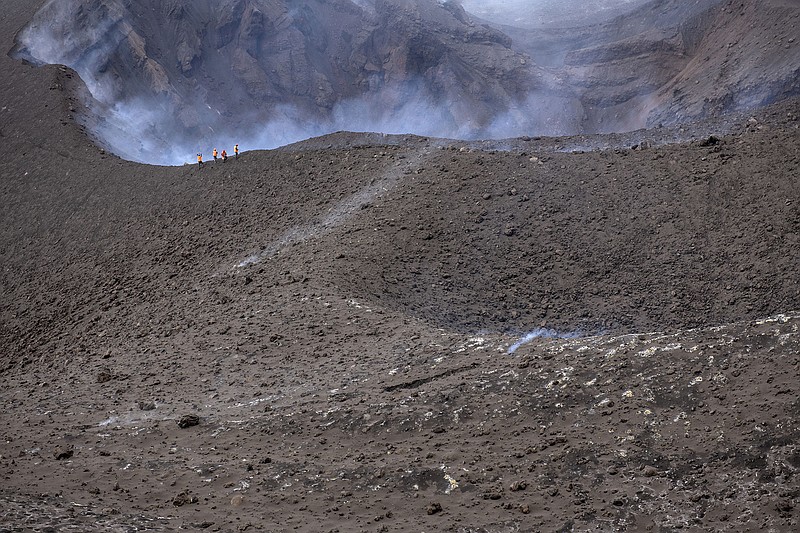MADRID -- Residents on the Spanish island of La Palma dared to hope Wednesday that their volcanic eruption is over after almost three months of unnerving daily explosions, earthquakes, rivers of molten rock and a huge ash plume containing toxic gases.
The Cumbre Vieja volcano in the Canary Islands off northwest Africa fell silent Monday evening, and scientists said its 36 hours or so of negligible activity might signal the beginning of the end of the eruption. Scientists won't rule out a resurgence of volcanic activity, which previously abated only to return with renewed force, but say it is unlikely.
"We cannot be 100% sure, as the volcano has been playing a few tricks over the last weeks," Valentin Troll, a geology expert with Sweden's Uppsala University and co-author of a geology study of the Canary Islands, told The Associated Press.
"But many parameters have now subsided, and I think the volcano is indeed in decline now," he said.
The Canary Islands government said "volcanic activity has fallen to almost nothing." Some wisps of white smoke floated from the crater Wednesday morning. As the eruption petered out, scientists ventured out on foot to the lip of the crater to take up-close gas readings for the first time in three months.
[Video not showing up above? Click here to watch » arkansasonline.com/1216volcano/]
Low and sustained levels of activity must be observed for 10 days for scientists to declare the end of the eruption, Maria Jose Blanco, a volcanologist and spokeswoman for Spain's National Geographic Institute, told reporters.
The eruption, which began Sept. 19, is the longest on record on La Palma and has been a milestone for islanders, many of whom live from farming and tourism. The volcanic Canary Islands are a popular European vacation destination because of the mild climate.
No injuries or deaths have been directly linked to the La Palma eruption, and life has continued largely as normal on most of the island of 80,000 residents. However, several thousand people were forced to abandon their homes and farms as they were engulfed by lava and a section of La Palma's southwestern side is severely damaged.
For some locals, relief at the weakening eruption was tempered by frustration at government promises of help they say has failed to materialize.
"Being able to see the sun properly for the first time in nearly three months, sleeping at night without tremors, totally changes the picture," said Francisco Javier Lopez, a 61-year-old resident of the village of Todoque. "But the future remains bleak."
Lopez lost his home of 30 years during the first few days of the eruption and says he is living in an overpriced rented apartment in a nearby village. The future of his paragliding business, which employed him and his wife, also evaporated as lava buried the takeoff and landing strips at the top of the Cumbre Vieja mountain range.
Lopez complained that despite pledges of free accommodation, subsidies and financial aid from national, regional and local officials, almost nothing has actually reached the affected people.
"The volcano has taken away our houses, including our past and memories," he told the AP. "But politicians are taking away our future and our hope."
Information for this article was contributed by Barry Hatton of The Associated Press.

